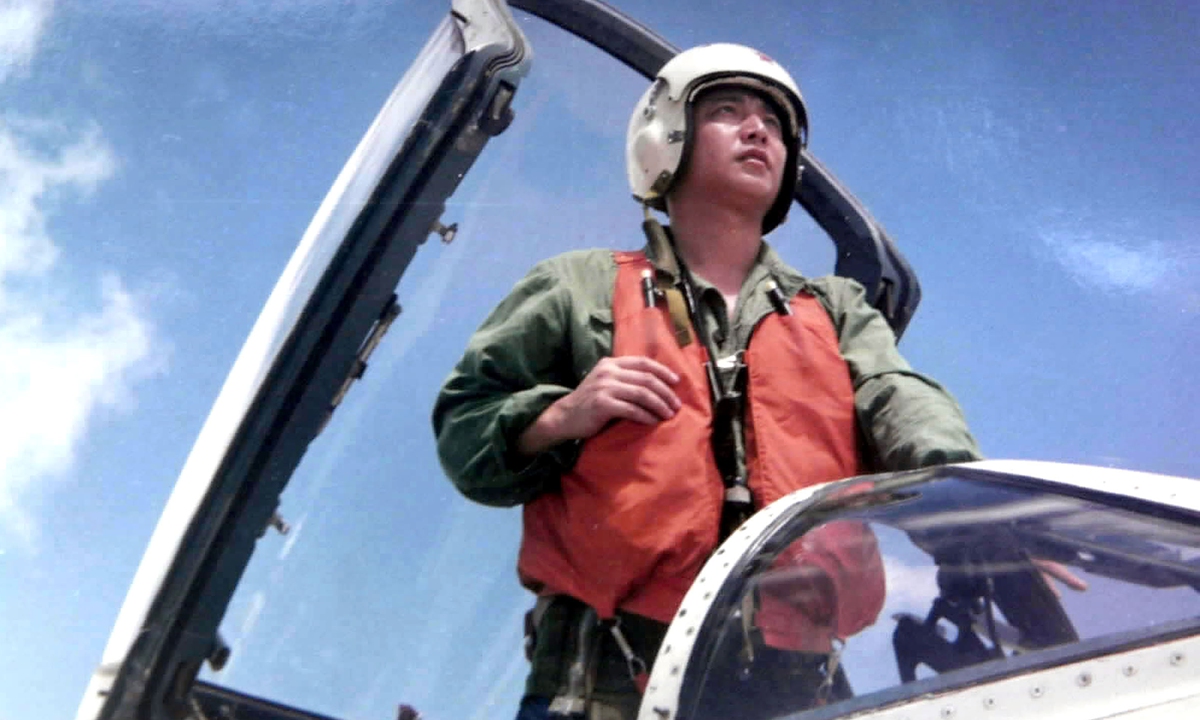
file photo: Chinese pilot Wang Wei Photo: VCG
According to US media reports, the EP-3E Aries II spy plane which collided with a Chinese fighter jet in 2001 in South China Sea has arrived at the Pima Air & Space Museum in Tucson, Arizona, from the aircraft "boneyard," for future public display.
US media describe the aircraft as a "reminder of the constant risk that aerial reconnaissance crews are exposed to on missions of this kind." However, such "reminder" is too superficial. As a historical relic of a prominent event in China-US relations, its exhibition is necessary and should serve as a warning to the US on how to properly perceive and manage China-US relations.
It is still unclear when and how the museum plans to exhibit the aircraft, but several basic facts should be prominently displayed: the incident occurred over China's exclusive economic zone, just 110 kilometers southeast of Hainan island, not over US exclusive economic zone; the 24 US personnel on board the spy plane were safely returned to the US after negotiations, while Chinese pilot Wang Wei could never return. The greatest lesson from this tragic event is the US' disregard for China's territorial sovereignty and national security concerns, stubbornly going its own way under the banner of "freedom of overflight." The responsibility for the incident lies entirely with the US, and this aircraft serves as evidence.
Twenty-three years have passed since the collision incident in South China Sea, yet the US has not conducted a thorough reflection or drawn lessons from that tragedy, and there have even been regressive trends.
According to a report from the South China Sea Strategic Situation Probing Initiative (SCSPI), in 2023, there were over 30,000 sorties of military aircraft in the South China Sea, with more than 10,000 involving external military aircraft, the vast majority of which were US military activities, totaling 7,872 sorties.
More concerning is that in recent years, US military reconnaissance activities targeting China in the South China Sea have grown increasingly aggressive, frequently approaching the airspace of the Chinese mainland and Hainan island and continually decreasing the distance to the Chinese coast.
Against the backdrop of changing China-US relations and the domestic situation in the US, the continuous provocative actions taken by the US military create a constant threat of triggering a similar event to what happened in 2001, or potentially an even more significant incident.
It should be noted that since the aircraft collision incident, China and the US have made considerable progress in ensuring the safety of their respective naval and air forces through clear and professional rules, especially the establishment of two "mutual trust mechanisms" - a reporting system on major military operations and a safe conduct code on naval and air encounters. To some extent, this has reduced the risk of unintended conflicts between the two militaries, though it can hardly eliminated the risks. An article in Foreign Affairs in July reviewed this historical event and posed a question: "Why the countries are dangerously unprepared for a repeat of the 2001 crisis?" Fundamentally, this lies in the US military's continued provocative reconnaissance activities close to China's borders, nor has it moved away from the outdated logic of pursuing "absolute security" at the expense of others' safety. To avoid a tragic repetition, the US must change its own behavior. The US should not harbor a sense of complacency. When facing provocations that threaten its sovereignty and interests, China will not back down.
In recent years, the process of re-establishing China-US military communication mechanisms, which had been suspended at one point, has been complex and hard-won. Many external observers worry that, with the anticipated shifts in US domestic politics, the China-US military relationship may face even greater unpredictability and complexity. This concern and skepticism are now directed at Washington, reflecting the global distrust of the US international image. The underlying cause of this distrust lies in the US' continued tendency toward risk-taking and interference in international affairs, without sufficient pragmatism and rationality to demonstrate an accurate understanding of itself, China, and the world.
Learning from history is the only way to avoid repeating past mistakes. Therefore, if the display of this US military plane is to have any meaningful historical value, it should primarily raise vigilance and resistance of the dangers posed by the US' frequent close reconnaissance missions, which disregard the sovereignty and security concerns of other countries.
The exhibit description should include calls from China and other countries worldwide to end US reconnaissance operations near their borders. In this sense, although the EP-3E is a small aircraft, it carries significant lessons and should serve as a warning sign to the US.




